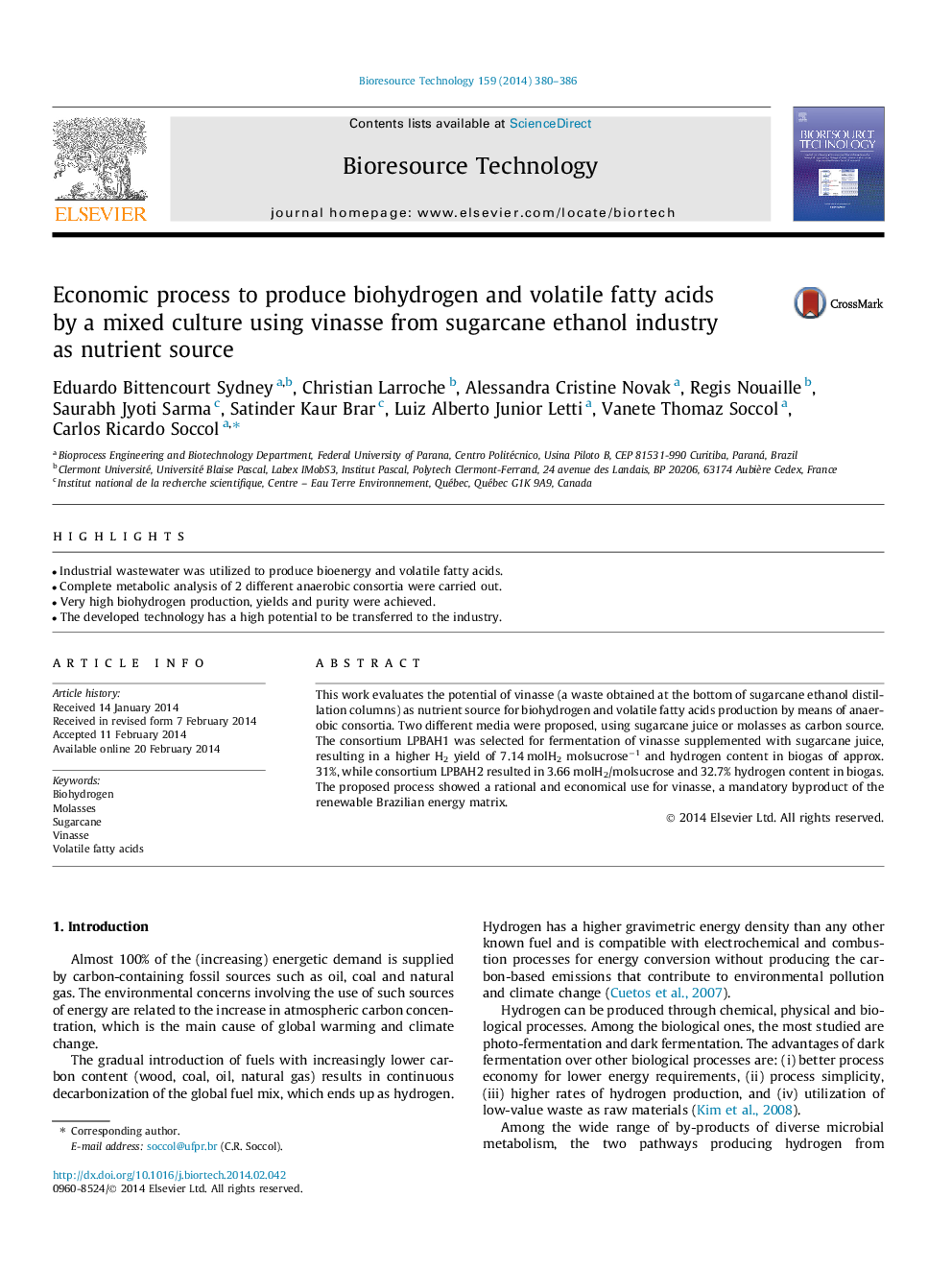| Article ID | Journal | Published Year | Pages | File Type |
|---|---|---|---|---|
| 7078541 | Bioresource Technology | 2014 | 7 Pages |
Abstract
This work evaluates the potential of vinasse (a waste obtained at the bottom of sugarcane ethanol distillation columns) as nutrient source for biohydrogen and volatile fatty acids production by means of anaerobic consortia. Two different media were proposed, using sugarcane juice or molasses as carbon source. The consortium LPBAH1 was selected for fermentation of vinasse supplemented with sugarcane juice, resulting in a higher H2 yield of 7.14Â molH2 molsucroseâ1 and hydrogen content in biogas of approx. 31%, while consortium LPBAH2 resulted in 3.66Â molH2/molsucrose and 32.7% hydrogen content in biogas. The proposed process showed a rational and economical use for vinasse, a mandatory byproduct of the renewable Brazilian energy matrix.
Related Topics
Physical Sciences and Engineering
Chemical Engineering
Process Chemistry and Technology
Authors
Eduardo Bittencourt Sydney, Christian Larroche, Alessandra Cristine Novak, Regis Nouaille, Saurabh Jyoti Sarma, Satinder Kaur Brar, Luiz Alberto Junior Letti, Vanete Thomaz Soccol, Carlos Ricardo Soccol,
